Threshold House
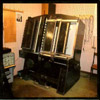 At first listen, COILANS seems like Exhibit A for the sort of experimental audio that functions as more of an intellectual or conceptual pleasure, rather than the sort of viscerally satisfying music I've come to expect from Coil. It clocks in at well over four hours of entirely unstructured, rhythm-less high-frequency sine-waves and subtly shifting AC hum. Tracks have no beginning or end, no point-counterpoint or resolution, and no tonal consistency. This new three-disc set also includes a DVD of synchronized digital animations for four of the tracks. It's a reissue and expansion of ANS, a limited edition, tour-only CD released last year, minimally packaged in an unmarked black plastic clamshell. This new boxed set comes in a beautiful foldout cardboard package (identical to the recent reissue of Nurse With Wound's Soliloquy for Lilith) decorated with pictures of the disused ANS machine itself, sitting neglected in a basement room of the Moscow State University, rarely used and in dire need of a radical overhaul. It was built in 1958 by Evgeny Murzin, who set out to create a synthesizer capable of producing the full range of audible frequency via a unique photoelectric process. The composer inscribes his visual "score" onto a glass plate covered with sticky black mastic, slides it through the machine, which reads the inscribed plate and converts the etchings into sound produced by a system of 800 oscillators. In the liner notes, which provide further technical information about the machine, Coil acknowledge that it takes a lot of practice and skill for the user to relate the marks on the plate to the resultant sounds. Soviet composer Alfred Schnittke (whose name is misspelled in the notes) spent an entire year of intensive work with the machine to produce his one and only piece of electronic music entitled "Flow." However, Coil spent only a few days with the ANS, so by their own admission, the sounds on these three discs cannot be described as "compositions" in any sense. Instead, the sounds represent an accidental interpretation of Coil's visual art into audible electricity. As such, it is pointless to assess the musical merit of any of these pieces. The soundpieces in the set are the work of various solo and group alignments of Jhonn Balance, Peter Christopherson, Ossian Brown, Thighpaulsandra and Ivan Pavlov of COH. The notes do not identify which track features which personnel, either because they can't remember or they think it doesn't matter. The CD wallets (and the prints included with the first edition of the set) feature some of the line drawings that were used to make these pieces, but once again, the listener is given no indication which drawings produced which sounds. The drawings operate as Spare-style magical talismans, where occult symbols and "alphabet of desire" glyphs representing words or phrases (such as the tautological "IT JUST IS" on the back of disc B) exist as arcane sigillizations. But the ANS is able to take these occult strategies a step beyond the usual, by transforming them into an entirely exotic lexicon of ghostly electric frequencies. This relation of visual image to sound had the effect of a strange form of synaesthesia on me as I waded through these four discs of unprocessed analog tones; I began to form novel mental connections between sound and vision, thoughts and symbols. Halfway through the third disc I had become like Nikola Tesla, obsessively listening to electronic signals trying to pick out messages he was certain were being transmitted by extraterrestrials. Is it possible for the mind to subconsciously decode this esoteric system of pulsations, throbs, clicks and whirrs? It's impossible to say with any certainty, but the mere suggestion that it might be so makes the sound entirely compelling. At first glance, the DVD animations seemed no more inventive than WinAmp visuals, but I soon noticed the subtle psychedelic abstractions present in each perfectly synchronized schema. By the end of my COILANS adventure, I was tuned into a heretofore unexplored magickal current, a current that sparks and buzzes with vibrations of the manifest spirit. Electricity has truly made angels of us all.
At first listen, COILANS seems like Exhibit A for the sort of experimental audio that functions as more of an intellectual or conceptual pleasure, rather than the sort of viscerally satisfying music I've come to expect from Coil. It clocks in at well over four hours of entirely unstructured, rhythm-less high-frequency sine-waves and subtly shifting AC hum. Tracks have no beginning or end, no point-counterpoint or resolution, and no tonal consistency. This new three-disc set also includes a DVD of synchronized digital animations for four of the tracks. It's a reissue and expansion of ANS, a limited edition, tour-only CD released last year, minimally packaged in an unmarked black plastic clamshell. This new boxed set comes in a beautiful foldout cardboard package (identical to the recent reissue of Nurse With Wound's Soliloquy for Lilith) decorated with pictures of the disused ANS machine itself, sitting neglected in a basement room of the Moscow State University, rarely used and in dire need of a radical overhaul. It was built in 1958 by Evgeny Murzin, who set out to create a synthesizer capable of producing the full range of audible frequency via a unique photoelectric process. The composer inscribes his visual "score" onto a glass plate covered with sticky black mastic, slides it through the machine, which reads the inscribed plate and converts the etchings into sound produced by a system of 800 oscillators. In the liner notes, which provide further technical information about the machine, Coil acknowledge that it takes a lot of practice and skill for the user to relate the marks on the plate to the resultant sounds. Soviet composer Alfred Schnittke (whose name is misspelled in the notes) spent an entire year of intensive work with the machine to produce his one and only piece of electronic music entitled "Flow." However, Coil spent only a few days with the ANS, so by their own admission, the sounds on these three discs cannot be described as "compositions" in any sense. Instead, the sounds represent an accidental interpretation of Coil's visual art into audible electricity. As such, it is pointless to assess the musical merit of any of these pieces. The soundpieces in the set are the work of various solo and group alignments of Jhonn Balance, Peter Christopherson, Ossian Brown, Thighpaulsandra and Ivan Pavlov of COH. The notes do not identify which track features which personnel, either because they can't remember or they think it doesn't matter. The CD wallets (and the prints included with the first edition of the set) feature some of the line drawings that were used to make these pieces, but once again, the listener is given no indication which drawings produced which sounds. The drawings operate as Spare-style magical talismans, where occult symbols and "alphabet of desire" glyphs representing words or phrases (such as the tautological "IT JUST IS" on the back of disc B) exist as arcane sigillizations. But the ANS is able to take these occult strategies a step beyond the usual, by transforming them into an entirely exotic lexicon of ghostly electric frequencies. This relation of visual image to sound had the effect of a strange form of synaesthesia on me as I waded through these four discs of unprocessed analog tones; I began to form novel mental connections between sound and vision, thoughts and symbols. Halfway through the third disc I had become like Nikola Tesla, obsessively listening to electronic signals trying to pick out messages he was certain were being transmitted by extraterrestrials. Is it possible for the mind to subconsciously decode this esoteric system of pulsations, throbs, clicks and whirrs? It's impossible to say with any certainty, but the mere suggestion that it might be so makes the sound entirely compelling. At first glance, the DVD animations seemed no more inventive than WinAmp visuals, but I soon noticed the subtle psychedelic abstractions present in each perfectly synchronized schema. By the end of my COILANS adventure, I was tuned into a heretofore unexplored magickal current, a current that sparks and buzzes with vibrations of the manifest spirit. Electricity has truly made angels of us all.
samples:
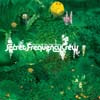 With their debut full length album, this New York City trio have created one of the most memorable melodic electronic albums in recent memory. Throughout the 11 track CD they fuse acoustic instrumentation with electronics to outstanding effect. The album works well as a whole, with many tracks segueing into one another seamlessly. Although most of the tracks are beat oriented, the varied drum sounds and patterns complement the melodic elements rather than become the focus.
With their debut full length album, this New York City trio have created one of the most memorable melodic electronic albums in recent memory. Throughout the 11 track CD they fuse acoustic instrumentation with electronics to outstanding effect. The album works well as a whole, with many tracks segueing into one another seamlessly. Although most of the tracks are beat oriented, the varied drum sounds and patterns complement the melodic elements rather than become the focus.

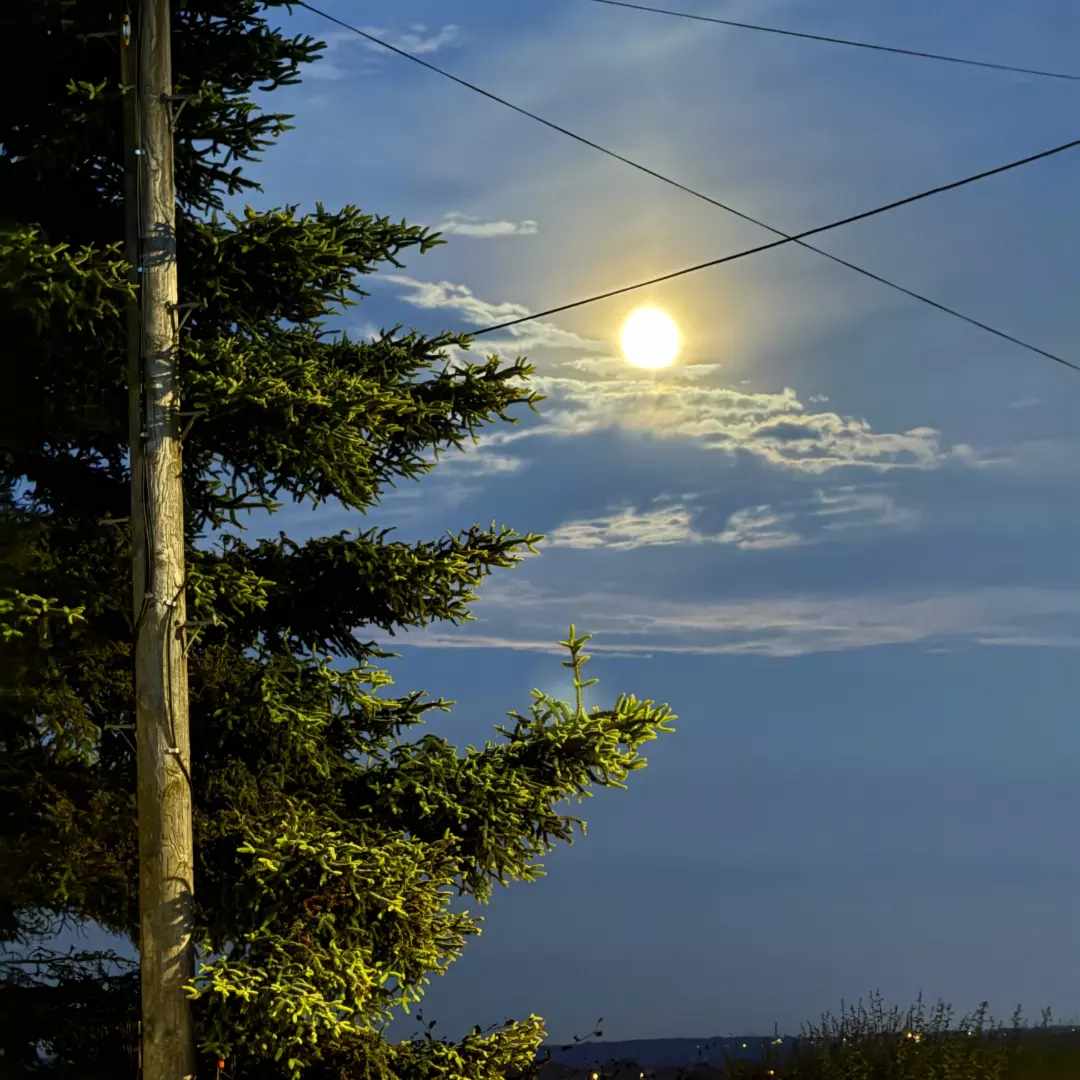
 At first listen, COILANS seems like Exhibit A for the sort of experimental audio that functions as more of an intellectual or conceptual pleasure, rather than the sort of viscerally satisfying music I've come to expect from Coil. It clocks in at well over four hours of entirely unstructured, rhythm-less high-frequency sine-waves and subtly shifting AC hum. Tracks have no beginning or end, no point-counterpoint or resolution, and no tonal consistency. This new three-disc set also includes a DVD of synchronized digital animations for four of the tracks. It's a reissue and expansion of ANS, a limited edition, tour-only CD released last year, minimally packaged in an unmarked black plastic clamshell. This new boxed set comes in a beautiful foldout cardboard package (identical to the recent reissue of Nurse With Wound's Soliloquy for Lilith) decorated with pictures of the disused ANS machine itself, sitting neglected in a basement room of the Moscow State University, rarely used and in dire need of a radical overhaul. It was built in 1958 by Evgeny Murzin, who set out to create a synthesizer capable of producing the full range of audible frequency via a unique photoelectric process. The composer inscribes his visual "score" onto a glass plate covered with sticky black mastic, slides it through the machine, which reads the inscribed plate and converts the etchings into sound produced by a system of 800 oscillators. In the liner notes, which provide further technical information about the machine, Coil acknowledge that it takes a lot of practice and skill for the user to relate the marks on the plate to the resultant sounds. Soviet composer Alfred Schnittke (whose name is misspelled in the notes) spent an entire year of intensive work with the machine to produce his one and only piece of electronic music entitled "Flow." However, Coil spent only a few days with the ANS, so by their own admission, the sounds on these three discs cannot be described as "compositions" in any sense. Instead, the sounds represent an accidental interpretation of Coil's visual art into audible electricity. As such, it is pointless to assess the musical merit of any of these pieces. The soundpieces in the set are the work of various solo and group alignments of Jhonn Balance, Peter Christopherson, Ossian Brown, Thighpaulsandra and Ivan Pavlov of COH. The notes do not identify which track features which personnel, either because they can't remember or they think it doesn't matter. The CD wallets (and the prints included with the first edition of the set) feature some of the line drawings that were used to make these pieces, but once again, the listener is given no indication which drawings produced which sounds. The drawings operate as Spare-style magical talismans, where occult symbols and "alphabet of desire" glyphs representing words or phrases (such as the tautological "IT JUST IS" on the back of disc B) exist as arcane sigillizations. But the ANS is able to take these occult strategies a step beyond the usual, by transforming them into an entirely exotic lexicon of ghostly electric frequencies. This relation of visual image to sound had the effect of a strange form of synaesthesia on me as I waded through these four discs of unprocessed analog tones; I began to form novel mental connections between sound and vision, thoughts and symbols. Halfway through the third disc I had become like Nikola Tesla, obsessively listening to electronic signals trying to pick out messages he was certain were being transmitted by extraterrestrials. Is it possible for the mind to subconsciously decode this esoteric system of pulsations, throbs, clicks and whirrs? It's impossible to say with any certainty, but the mere suggestion that it might be so makes the sound entirely compelling. At first glance, the DVD animations seemed no more inventive than WinAmp visuals, but I soon noticed the subtle psychedelic abstractions present in each perfectly synchronized schema. By the end of my COILANS adventure, I was tuned into a heretofore unexplored magickal current, a current that sparks and buzzes with vibrations of the manifest spirit. Electricity has truly made angels of us all.
At first listen, COILANS seems like Exhibit A for the sort of experimental audio that functions as more of an intellectual or conceptual pleasure, rather than the sort of viscerally satisfying music I've come to expect from Coil. It clocks in at well over four hours of entirely unstructured, rhythm-less high-frequency sine-waves and subtly shifting AC hum. Tracks have no beginning or end, no point-counterpoint or resolution, and no tonal consistency. This new three-disc set also includes a DVD of synchronized digital animations for four of the tracks. It's a reissue and expansion of ANS, a limited edition, tour-only CD released last year, minimally packaged in an unmarked black plastic clamshell. This new boxed set comes in a beautiful foldout cardboard package (identical to the recent reissue of Nurse With Wound's Soliloquy for Lilith) decorated with pictures of the disused ANS machine itself, sitting neglected in a basement room of the Moscow State University, rarely used and in dire need of a radical overhaul. It was built in 1958 by Evgeny Murzin, who set out to create a synthesizer capable of producing the full range of audible frequency via a unique photoelectric process. The composer inscribes his visual "score" onto a glass plate covered with sticky black mastic, slides it through the machine, which reads the inscribed plate and converts the etchings into sound produced by a system of 800 oscillators. In the liner notes, which provide further technical information about the machine, Coil acknowledge that it takes a lot of practice and skill for the user to relate the marks on the plate to the resultant sounds. Soviet composer Alfred Schnittke (whose name is misspelled in the notes) spent an entire year of intensive work with the machine to produce his one and only piece of electronic music entitled "Flow." However, Coil spent only a few days with the ANS, so by their own admission, the sounds on these three discs cannot be described as "compositions" in any sense. Instead, the sounds represent an accidental interpretation of Coil's visual art into audible electricity. As such, it is pointless to assess the musical merit of any of these pieces. The soundpieces in the set are the work of various solo and group alignments of Jhonn Balance, Peter Christopherson, Ossian Brown, Thighpaulsandra and Ivan Pavlov of COH. The notes do not identify which track features which personnel, either because they can't remember or they think it doesn't matter. The CD wallets (and the prints included with the first edition of the set) feature some of the line drawings that were used to make these pieces, but once again, the listener is given no indication which drawings produced which sounds. The drawings operate as Spare-style magical talismans, where occult symbols and "alphabet of desire" glyphs representing words or phrases (such as the tautological "IT JUST IS" on the back of disc B) exist as arcane sigillizations. But the ANS is able to take these occult strategies a step beyond the usual, by transforming them into an entirely exotic lexicon of ghostly electric frequencies. This relation of visual image to sound had the effect of a strange form of synaesthesia on me as I waded through these four discs of unprocessed analog tones; I began to form novel mental connections between sound and vision, thoughts and symbols. Halfway through the third disc I had become like Nikola Tesla, obsessively listening to electronic signals trying to pick out messages he was certain were being transmitted by extraterrestrials. Is it possible for the mind to subconsciously decode this esoteric system of pulsations, throbs, clicks and whirrs? It's impossible to say with any certainty, but the mere suggestion that it might be so makes the sound entirely compelling. At first glance, the DVD animations seemed no more inventive than WinAmp visuals, but I soon noticed the subtle psychedelic abstractions present in each perfectly synchronized schema. By the end of my COILANS adventure, I was tuned into a heretofore unexplored magickal current, a current that sparks and buzzes with vibrations of the manifest spirit. Electricity has truly made angels of us all.
 There is something otherworldly lurking just below the surface of Klas Rydberg's strained howls that is slightly off-putting, something that is not so much heard as felt, something that draws you in while oozing a slight uneasiness. Where a majority of the increasing number of sludgy, pseudo doom acts are content to pound away on the same note for hours on end in the name of "atmosphere," this Swedish septet strives for something more on their third full length.
There is something otherworldly lurking just below the surface of Klas Rydberg's strained howls that is slightly off-putting, something that is not so much heard as felt, something that draws you in while oozing a slight uneasiness. Where a majority of the increasing number of sludgy, pseudo doom acts are content to pound away on the same note for hours on end in the name of "atmosphere," this Swedish septet strives for something more on their third full length.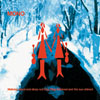 In describing the sound of Mono's third full-length album it's hard not to invoke a number of bands whom I have nevertheless sworn to eschew in the body of this review. Let it suffice to say that the music is sweeping, anthemic, instrumental, crescendo-heavy, at once deliberately delicate and mindlessly reckless; this much should give you some idea of the musical path on which Mono tread (some might even call it a new path to Helicon, to tell the truth).
In describing the sound of Mono's third full-length album it's hard not to invoke a number of bands whom I have nevertheless sworn to eschew in the body of this review. Let it suffice to say that the music is sweeping, anthemic, instrumental, crescendo-heavy, at once deliberately delicate and mindlessly reckless; this much should give you some idea of the musical path on which Mono tread (some might even call it a new path to Helicon, to tell the truth).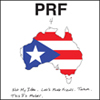 While comparisons to Cold Cave are going to be somewhat inevitable in this day and age, this four track EP from Clockcleaner vocalist/guitarist John Sharkey III embraces the new wave nostalgia to some extent, but the result is closer to early '80s death rock than the more synth heavy projects, owing far more to the likes of Christian Death than New Order.
While comparisons to Cold Cave are going to be somewhat inevitable in this day and age, this four track EP from Clockcleaner vocalist/guitarist John Sharkey III embraces the new wave nostalgia to some extent, but the result is closer to early '80s death rock than the more synth heavy projects, owing far more to the likes of Christian Death than New Order. Having been stalwarts in the Japanese electroacoustic microsound scene for over a decade now, the quartet has always focused on unifying the usually disparate worlds of laptop based programming and improvised organic music. For their second release on the 12k label, they have done exactly that, marrying acoustic guitar with software patches, all presented in a warm, post-rock influenced analog audio bath.
Having been stalwarts in the Japanese electroacoustic microsound scene for over a decade now, the quartet has always focused on unifying the usually disparate worlds of laptop based programming and improvised organic music. For their second release on the 12k label, they have done exactly that, marrying acoustic guitar with software patches, all presented in a warm, post-rock influenced analog audio bath.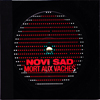 After successful releases on Sedimental and Tilt Recordings Thanasis Kaproulias was invited to the venerable VPRO Radio to perform a piece live, and unsurprisingly it has been released on the Staalplaat label for the rest of the world to hear. The single 47 minute track covers the composer’s sound as it is being refined, capturing elements of other artists such as Francisco Lopez and Bernhard Gunter, but still retaining an identity all his own.
After successful releases on Sedimental and Tilt Recordings Thanasis Kaproulias was invited to the venerable VPRO Radio to perform a piece live, and unsurprisingly it has been released on the Staalplaat label for the rest of the world to hear. The single 47 minute track covers the composer’s sound as it is being refined, capturing elements of other artists such as Francisco Lopez and Bernhard Gunter, but still retaining an identity all his own. The debut release from this synthesiser duo of Andrew Fogarty and Ivan Pawle is a raw but ultimately unsatisfying release which fails to capture the full potential of the group. The basic ingredients are here but they have not come together yet. That being said, this is far from a bad release but based on this EP alone there is not a lot to separate Boys of Summer from the countless other CD-R/tape culture groups out there.
The debut release from this synthesiser duo of Andrew Fogarty and Ivan Pawle is a raw but ultimately unsatisfying release which fails to capture the full potential of the group. The basic ingredients are here but they have not come together yet. That being said, this is far from a bad release but based on this EP alone there is not a lot to separate Boys of Summer from the countless other CD-R/tape culture groups out there.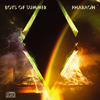 Expanded to a three piece, this second EP from Dublin’s Boys of Summer hits all the spots that V failed to tickle. With a far richer palette of tones at their disposal, the group offer an immensely satisfying journey through the dustier regions of that piece of meat between the ears that calls itself a brain. Like transmissions from another planet, these three pieces are alien sounding and utterly bewitching.
Expanded to a three piece, this second EP from Dublin’s Boys of Summer hits all the spots that V failed to tickle. With a far richer palette of tones at their disposal, the group offer an immensely satisfying journey through the dustier regions of that piece of meat between the ears that calls itself a brain. Like transmissions from another planet, these three pieces are alien sounding and utterly bewitching.
